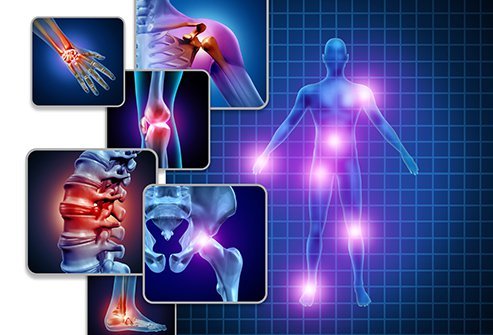From the thalamus, impulses are delivered to various areas of the cerebral cortex that allow the perception of pain and reaction to pain. In the dorsal horn of the spinal cord the afferent sensory nerves synapse with fibres of the ascending spinothalamic tract, either directly or via a complex system of connecting fibres or interneurons, employing a variety of neurotransmitters that include substance P and glutamate. The presynaptic terminal of the afferent sensory fibre contains opioid receptors which bind endogenous opioid substances (endorphins) or exogenous opioid medications. Such binding reduces or blocks the release of neurotransmitter by the afferent sensory fibre, reducing or relieving the sensation of pain. This is the prime site of action of exogenous opioid drugs. Similarly, activation of the inhibitory neurons in the dorsal horn, known to have endorphins as neurotransmitters, will reduce pain. The inhibitory neurons are stimulated by activity in the descending pathways from the brain or by activity in other sensory fibres in the same segment, explaining why massage, heat or electrical stimulation applied to a painful area may reduce pain. Other receptors in the dorsal horn may have an opposite effect. Activation of the N-methyl D-aspartate (NMDA) receptors sensitizes dorsal horn cells & will facilitate/perpetuate the sensation and may responsible for the reduced opioid sensitivity of neuropathic pain. The NMDA receptor antagonist, ketamine, can be effective in relieving pain in this situation.
Pain impulses transmitted to the thalamus are relayed to several areas of the cerebral cortex: the sensory areas of the parietal lobe that allow localization and interpretation of the pain; the limbic system, which is involved in both the affective and autonomic response to the pain; the temporal lobe, which is involved in pain memory; and the frontal lobe where cognitive function assesses the significance of the pain and the emotional response to it.
The major endogenous mechanism of pain inhibition is the suppression of pain impulses at the dorsal horn by pathways descending from the midbrain and brain stem. These centres receive input from the cortex, the thalamus and other midbrain centres and, by a variety of descending pathways, stimulate the inhibitory interneu�rons in the dorsal horn of the spinal cord, producing analgesia or reducing pain. The neurotransmitters involved with the descending inhibitory pathways are noradrena�line and serotonin. This is a possible explanation as to why drugs that block presynaptic re-uptake and augment the postsynaptic action of these substances, such as amitriptyline, may augment analgesia.
Neuropathic pain results from anatomical and/or physiological changes which may be due to damage to nerves or neural tissue rather than the stimulation of nociceptors by tissue injury or inflammation. Pain results from spontaneous electrical activity of the damaged nerves or to increased sensitivity to exogenous stimuli; the neural pathways involved are the same as for nociception. Damage to sensory afferent fibres results in a significant reduction in the number of opioid receptors in the presynaptic terminals of the affected fibres in the dorsal horn, possibly explaining the reduced opioid sensitivity of neuropathic pain. Damage to sympathetic nerve fibres may lead to sympathetic type pain in which neuropathic pain is accompanied by signs of autonomic dysfunction, including vasomotor instability and sudomotor (sweating) changes.
